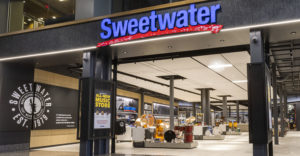It wasn’t that long ago when traditional warehouses had one purpose: to store goods on their way from manufacturers to retailers and other commercial customers.
Today, warehousing for many industries has evolved into e-commerce fulfillment centers. In addition to inventory storage, e-fulfillment is part of an overall logistics strategy that focuses on moving goods to end-users.
This big transition has primarily come about because of the steady rise and continued use of e-commerce. Let’s look at how the warehousing space has changed in recent years.
Conventional Warehousing
Warehouses of yesterday were generally at the center of an extended supply chain. The primary focus was the storage and movement of bulk items from one point to another. For example, warehouse personnel might shift thousands of units of clothing to various locations for one retailer.
Today, however, warehouses are increasingly becoming the endpoint of the supply chain. In doing so, those units of clothing might now be shipped directly to a customer without anyone in the middle.
Traditional warehousing typically catered to large businesses with what seemed like unlimited resources. These facilities were extensive and located where they could service large customers, such as manufacturers and big-box retailers.
A warehouse typically only stores inventory, while a fulfillment center does much more.
Warehousing in the World of E-Commerce
In recent years, consumers have realized the benefits of making 24/7 online purchases from the comfort of their homes. Additionally, many of those purchases come from companies of all sizes worldwide.
This evolution has significantly changed the goals of logistical companies as they strive to provide online customers with the best service in the shortest time.
The Modern E-Fulfillment Center
E-commerce fulfillment, or e-fulfillment, means more than inventory storage. The process involves activities connected to receiving and storing goods and processing orders, including picking and packing items, shipping, and returns. In other words, these centers cover every step in the order and delivery process. Today’s e-fulfillment centers are essential conduits for e-commerce stores that operate as direct-to-consumer entities.
The centers act as third-party logistics (3PL) providers, responsible for fulfilling all types of customer orders. Rather than being primarily located near oceanside or inland ports, these fulfillment centers are also being built near population centers to help boost last-mile inventory handling and delivery processes. For example, look at Amazon’s network of fulfillment centers; many of those are in suburban areas.
E-Fulfillment Facility Types
There are different types of e-fulfillment facilities, which can vary based on purpose and location. These include the following:
Multi-Story Warehouses
Once common in densely populated places in Asia, multi-story warehouses are slowly popping up in the U.S. The reason? Property developers have realized they must provide industrial real estate closer to larger consumer markets. In many cases, these vertical structures are in areas experiencing land shortages and building size restrictions.
Dark Stores
By contrast, dark stores are reimagined traditional retail distribution centers that offer last-mile delivery and through automated fulfillment systems. The stores are often huge complexes and allow customers to collect items purchased online. Originally exclusive to the U.K., dark stores have grown in popularity across the rest of Europe and in the U.S.
Micro-Fulfillment Centers
As the name suggests, micro-fulfillment centers (MFC) are smaller, repurposed facilities that typically include automated distribution networks. These locations are often located in an existing retail store or warehouse and are sometimes within a parking garage or parking lot. They typically are 10,000 square feet or less.
Nano-Distribution Centers
Finally, there are nano-distribution or “last-touch” centers. Originally, these were office or retail locations. Today, these facilities are often an extension of established supply chains and help facilitate deliveries to where consumers live and work.
These centers are considered the fastest and smallest supply chain solution (starting at just 250 square feet) and are in the closest proximity to customers. You’ll find these in urban areas.
Benefits of E-Fulfillment
There are many advantages to outsourcing logistics activities to e-fulfillment centers. One is lower overall operational costs. For example, many centers have more buying power because they’re buying items like packing materials in bulk. Additionally, they often have the bandwidth to broker deals with various shipping carriers, including UPS, FedEx, DHL, and others. This can lower costs — which you can pass down the line — while improving delivery efficiencies.
Other benefits of using e-fulfillment centers as part of your overall logistics strategy include the following:
- Better personnel management: you don’t have to worry about hiring fulfillment workers
- More operational space, as storage and fulfillment activities take place elsewhere
- Access to the latest logistics technology without having to pay for it
- Enhanced customer service, as fulfillment experts take over picking, packing, and shipping
- Expanded reach to different markets, as multiple e-fulfillment centers are used to move your inventory
- More focus on core competencies, allowing you to focus on what your organization does best
Beyond Just Storage
As e-commerce continues to expand, so will the need for e-fulfillment centers, which, unlike traditional warehouses, do more than store inventory. E-commerce fulfillment centers can assist and take over your organization’s ordering and shipping process. By doing so, your business can concentrate on what it does best — core activities.


















































Social Media
See all Social Media